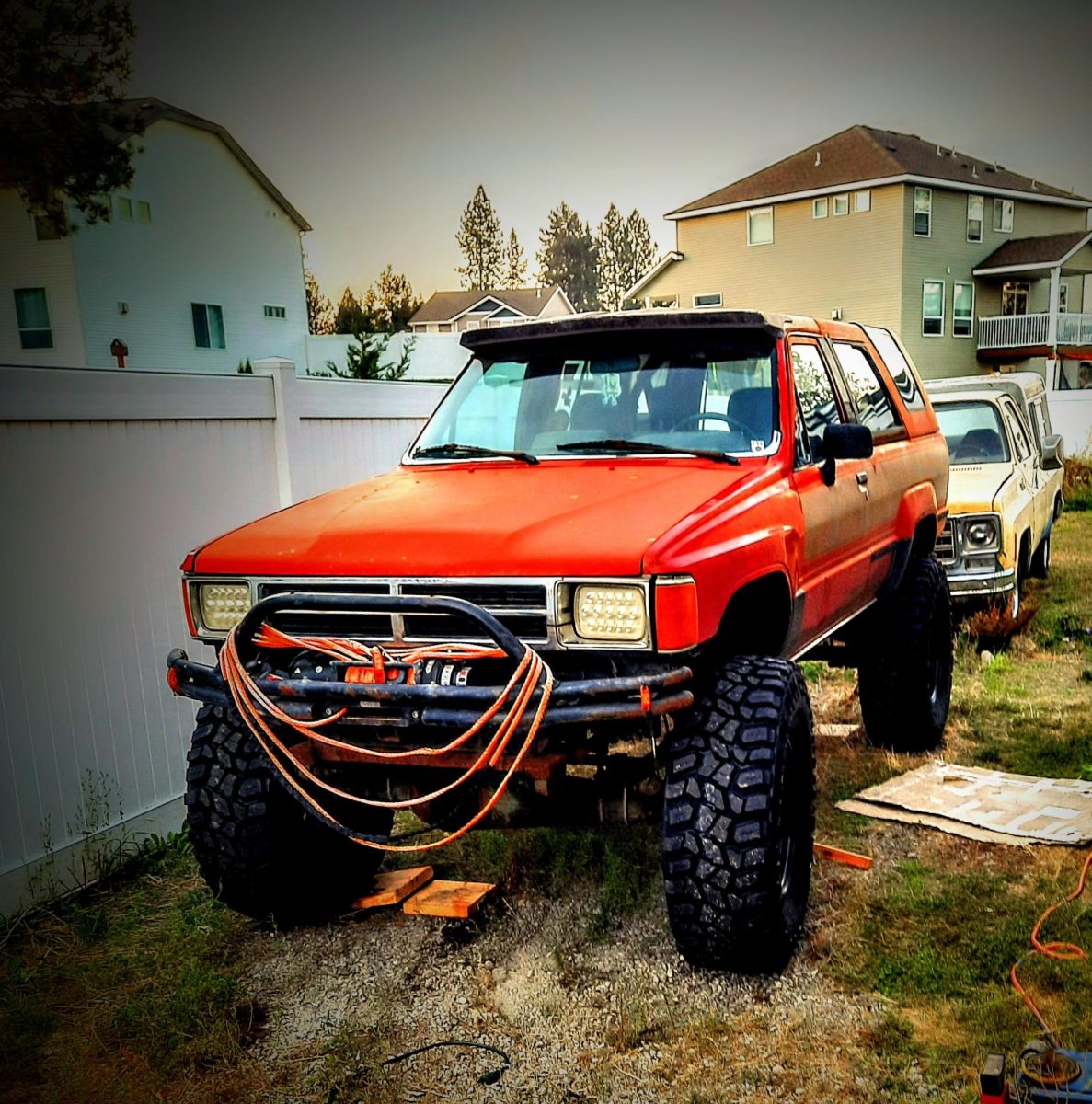There used to be lots of options for people who wanted an SUV with a removable top. The Ford Bronco, International Harvester Scout, Chevy Blazer, Dodge Ramcharger, and the Suzuki Samurai and Sidekick all had removable tops at one point.
In 1984, a new wave of small SUVs began to flood the market. Chevy had introduced the S-10 Blazer the year before, and the Ford Bronco II, the Jeep Cherokee, and the Toyota 4Runner were hot on its heels, with more to come.
The Toyota 4Runner is one of the most iconic toyotas in the offroading world due to its concept of being the same as the pickup but an SUV. In the 90’s people started this thing called rock crawling. They would take their vehicle and go up mountain trails where you can’t take your normal vehicle, they would get bigger tires, suspension kits, bumpers, and heavy duty parts so they were more capable of bigger obstacles.
The two-door SUV also had a cool So-Cal beach cruiser vibe its rivals lacked, with a unique removable rear roof secured by 14 bolts and a standard roll bar behind the back seat. Its power rear glass even retracted into the tailgate so you could hang your longboards out the back.
The First Gen 4Runner was part pickup, part SUV, and part Jeep CJ. Two trim levels were offered, with the upscale SR5 getting interior upgrades and the back seat, gradated strobe-stripe graphics, and chrome wheels. Starting in 1985, you could add the back seat to the base model, but Toyota never put shoulder belts back there.
Toyota added fuel injection the second year and horsepower jumped to 100. A 116-hp version was also offered, and in 1986 and 1987 a 135-hp turbocharged four cylinder was available. That engine came with the manual, but most were SR5s with the optional four-speed automatic.
In the final two years of production, a 3.0-liter SOHC V-6 was offered. It was rated at 145 hp and 185 lb-ft of torque, with a bump to 150 hp in 1989. SR5s with the V-6 and five-speed got auto locking front hubs. Over the years, 0-60-mph times dropped from months to weeks to about 12 seconds. These trucks do not have ABS, and air conditioning was optional, even on the SR5. In 1990, Toyota redesigned the 4Runner, adding back doors and a fixed steel roof, the configuration it retains in the current generation.
Toyota played up the fiberglass cap in its advertising stating “First, take off the removable rear top and let the sunshine in. Then pile in. Kick it into four-wheel drive and blaze a trail to your favorite spot. Now that’s having a good time with style.”
The options are much more limited these days thanks to noise targets and safety requirements. And while it would be nice to remove the top of a new 4Runner. The top on first gen 4Runners are removable unlike the new ones but you could just use a special tool called a Sawzall, and it can only be done once.
